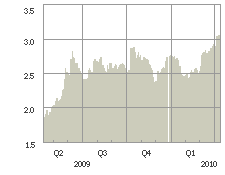There will be a huge quantum shift coming in the financial markets, and this is mostly inspired by the fiscal mess that countries such as the United Kingdom and the United States will be facing in the medium term future.
It has to do with the concept of the “risk-free rate”. Most formulas in finance reference the US government bond or Eurodollar (essentially an interbank short term interest rate) as the “risk-free rate”, where all other financial securities are referenced from. So if the 5-year US government bond is trading at a 2.5% yield and General Electric issues 5-year debt at 3.2%, typically the financial literature would state that the bonds were sold at 70 basis points over. The spread of yield, rather than the absolute yield itself has typically been the market benchmark in determining how creditworthy a corporate issue is.
This is going to change, mainly because the risks inherent in the reference securities will be significant to the point that it will start to distort the concept of the spread.
It is very unlikely that the US government will default on their debt; instead, the road to their fiscal recovery will lie upon debasing their currency. An investor in General Electric would still face the same inflation risk as an investor in US government securities; however, the big difference in modern finance is that an investor can hedge their currency risk and solely take on the default risk of the security.
As a result, it will increasingly be seen that corporate bonds will be trading at lower yields than their government counterparts under the belief that the market thinks the corporation is more likely to pay off its investors than the government.
Thus, the finance variable of the risk-free rate must not be solely relied upon – just as how Newton’s Laws become unreliable when dealing with objects that are close to the speed of light, the risk-free rate becomes unreliable when sovereign defaults start becoming non-zero possibilities.
Quantitative traders that fail to adjust for this in their models will end up losing a lot of money for their clients.
